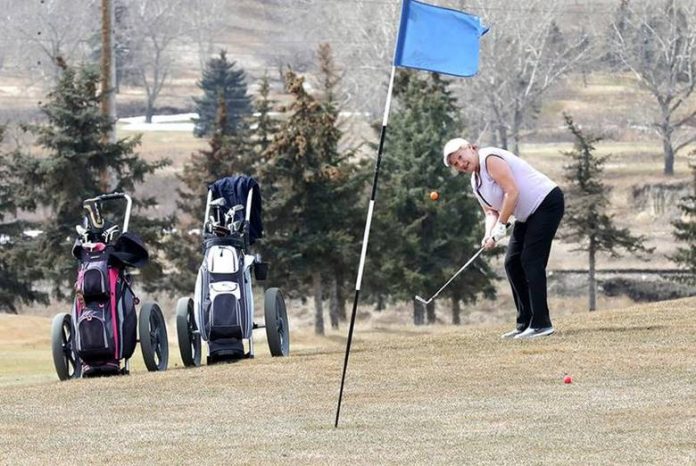
I saw some friends amid lovely verdant space on the weekend. There were beers involved. And I wasn’t even breaking any lockdown rules.
I played golf. For the first time in my life, a round of golf meant something more than a chance to play an exceedingly frustrating sport for a few hours. It was a chance to actually spend more than a brief passing minute in the company of friends, doing something that felt at least halfway normal. While other provinces had opened courses weeks ago, and some never closed them, Ontario was in just its second weekend of sanctioned golf amid the pandemic.
The result, at least in this province, was an odd dichotomy. On the first hot and sunny weekend of 2020, the concept of “spring” having decided to give Ontario a total pass this year, golf courses were full of participants eager to get out of the house and do something different after two months of Netflix and the odd Korean baseball game. At the same time, a crowd of thousands gathered in a downtown Toronto park, flouting physical-distancing rules and sparking waves of condemnation on social media and in comments from politicians and health-care workers. The first type of event takes place without anyone remarking upon it. The second type brings outrage, and debates about everything from the transmission of COVID-19 to the social contract to city planning. It raises a couple of questions: How are authorities going to handle this period where one of the few sanctioned outdoor activities is a niche sport? And on a related note, will the pandemic save golf?
First, an obvious point: there isn’t a binary choice being made here between golf and public parks. People in this province are allowed to go to parks and sit on the grass and hang out with friends, providing they are adhering to physical-distancing guidelines. The scenes at Toronto’s Trinity Bellwoods on the weekend weren’t simply those of people enjoying a park, it was scads of people in close proximity, an outdoor concert minus the actual concert. And, if a random golf course was as jam-packed as was that park on Saturday, its patrons would also have been decried as selfish and come in for a rebuke from the Premier.
But it’s also true that golfers, merely by being people who play golf, enjoy some notable privileges at this point in the pandemic response. Residents of different households can gather and spend hours in each other’s company, and they can do so while outdoors and purchasing alcohol. That last part would be against the law in a park, which is all the more notable since bars and restaurants, even those with patios, remain closed. If you live in an apartment or a condo and you want to get together with a couple of friends over some beers, the only option — that is, the only option that is not in contravention of Ontario guidance — is to get some golf clubs and meet them at a course. That is, for a non-golfer, a significant undertaking.
The pent-up demand for the ability to do something — anything, really — like play golf has been evident already. Courses have been full, which is to say they have had a steady stream of people who are properly spaced apart. Or, at least, they can be properly spaced apart. The field of play is massive, and everyone can respect the two-metre rule, play the game, and never feel like they have come too close to any of their playing partners. Eager to get back to business, courses have embraced guidelines meant to limit the possible spread of coronavirus, removing rakes from sand traps, banning the removal of pins from greens, and rigging the cups so that balls do not fall all the way to the bottom. It’s all meant to keep golfers from touching anything that other golfers might touch.











